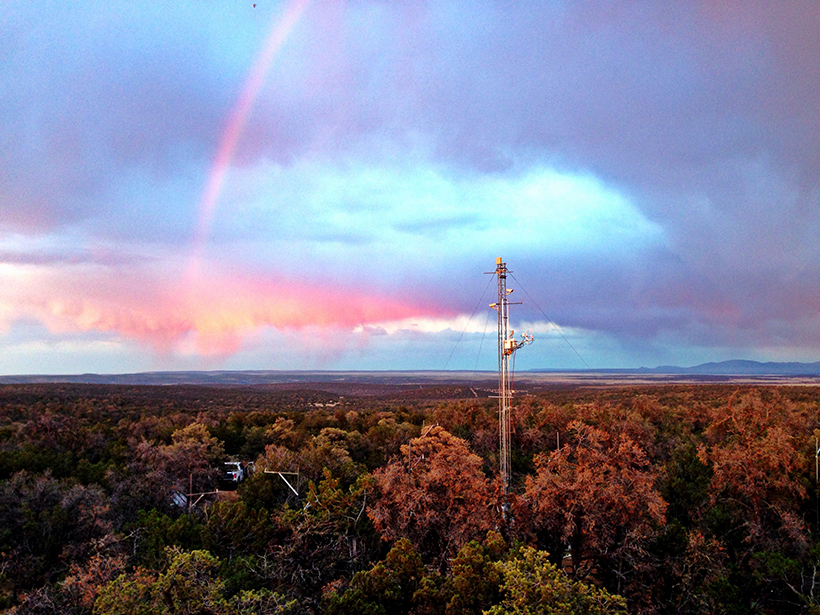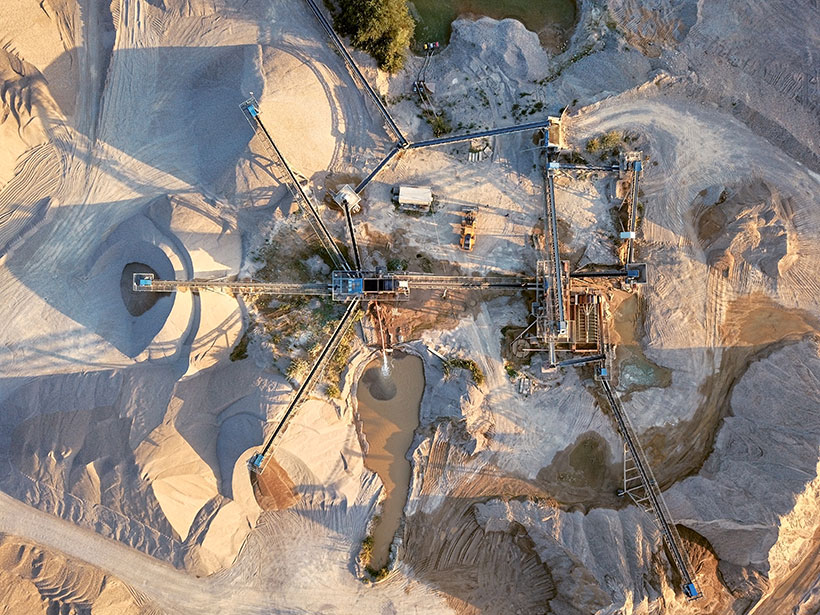Increments of melt trapped in crystals reveal upper crustal magmas in the Main Ethiopian Rift are rich in water and other volatiles, leading to extensive diffuse degassing and hydrothermal systems.
Modeling
Measuring, Monitoring, and Modeling Ecosystem Cycling
Scientists leverage long-term environmental measurements, emerging satellite observations, and recent modeling advances to examine changes in ecosystem carbon and water cycling.
Weathering Environmental Change Through Advances in AI
Developing trustworthy artificial intelligence for weather and ocean forecasting, as well as for long-term environmental sustainability, requires integrating collaborative efforts from many sources.
The Global Geomagnetic Field of the Past Hundred Thousand Years
Global data compilations and the production of time-varying paleomagnetic field models over the past hundred thousand years provide insights into geomagnetic field evolution.
Asteroid Impact, Not Volcanism, Likely Spelled Dinosaurs’ End
Using climate and habitat modeling, researchers show that solar dimming caused by an asteroid impact would have plunged the world into an “impact winter” and decimated dinosaur habitats.
¿Cuántas Modificaciones Puede Aguantar el Ciclo de Agua de la Tierra?
El marco teórico que estudia los límites planetarios define cuánta perturbación humana pueden soportar los diversos procesos del sistema terrestre, pero puede que no describa adecuadamente el ciclo del agua o la medida en que lo hemos alterado.
Traduciendo Modelos Climáticos al Lenguaje de Datos Paleoclimáticos
Un nuevo modelo permitirá a los modelos climáticos interpretar mejor las reconstrucciones paleoclimáticas derivadas de sedimentos de lagos y podrá mejorar las predicciones de las condiciones climáticas futuras.
Larger Waves in Store as the Planet Warms
By the end of the 21st century, waves will have gotten larger in some ocean basins, particularly the Southern Ocean, climate modeling reveals.
To Protect the World’s Sand, We Need to Know How to Measure It
New research provides a more accurate model that coastal managers and engineers can use to account for sand transport over time.
When Natural Disasters Cross the Path of COVID-19
Natural hazards are intersecting with the coronavirus pandemic in India, and researchers will need to model both to inform the public health response.










